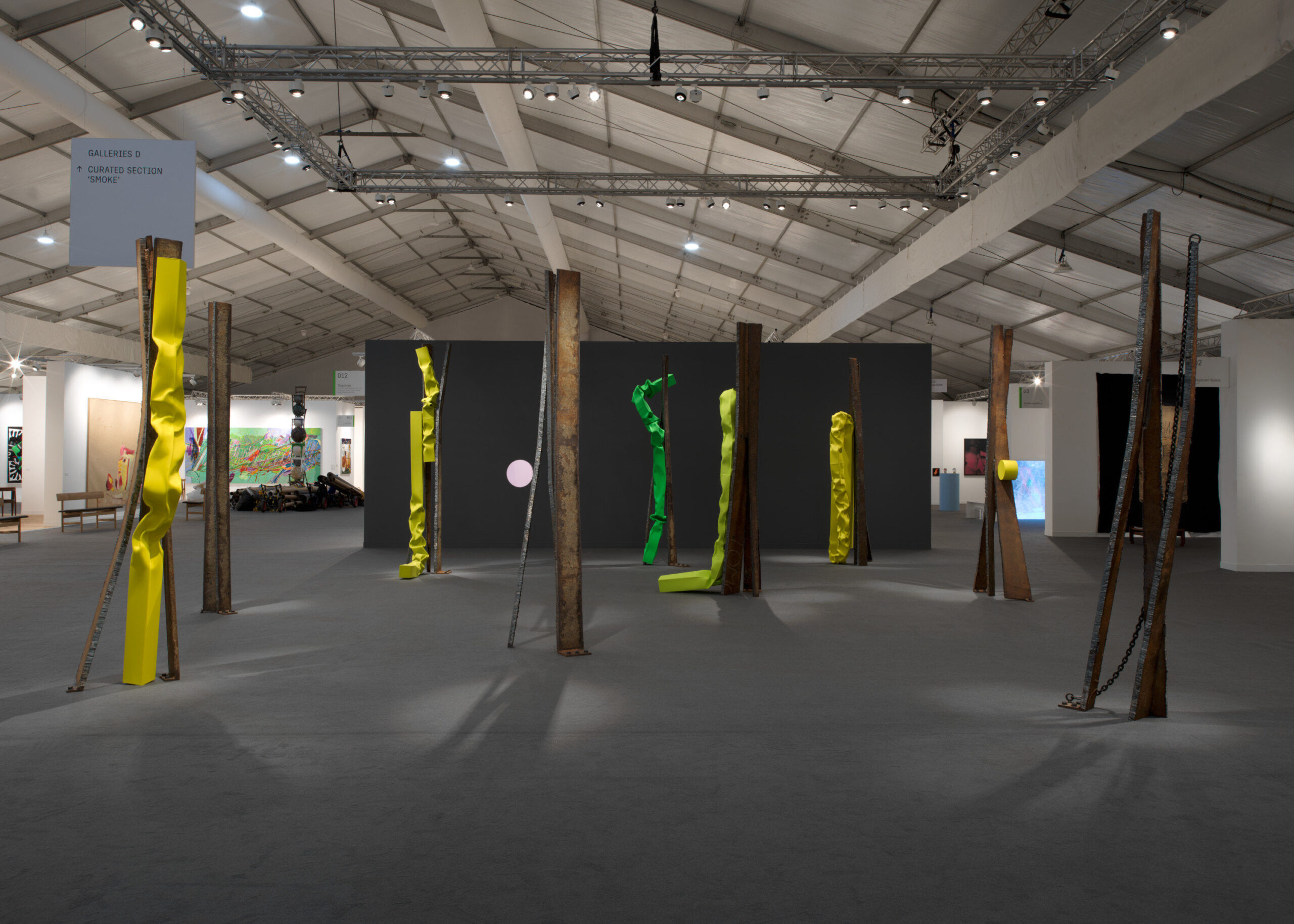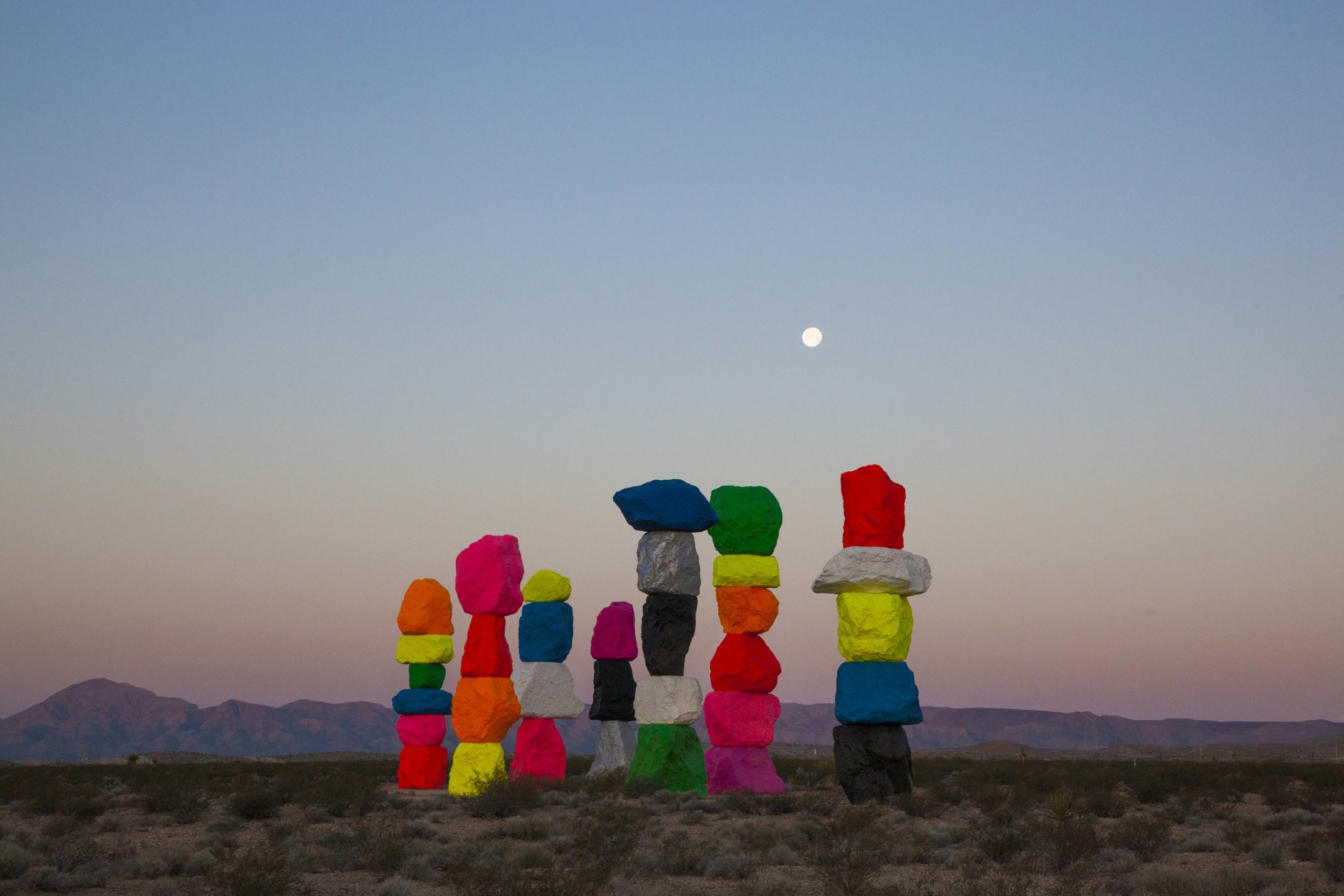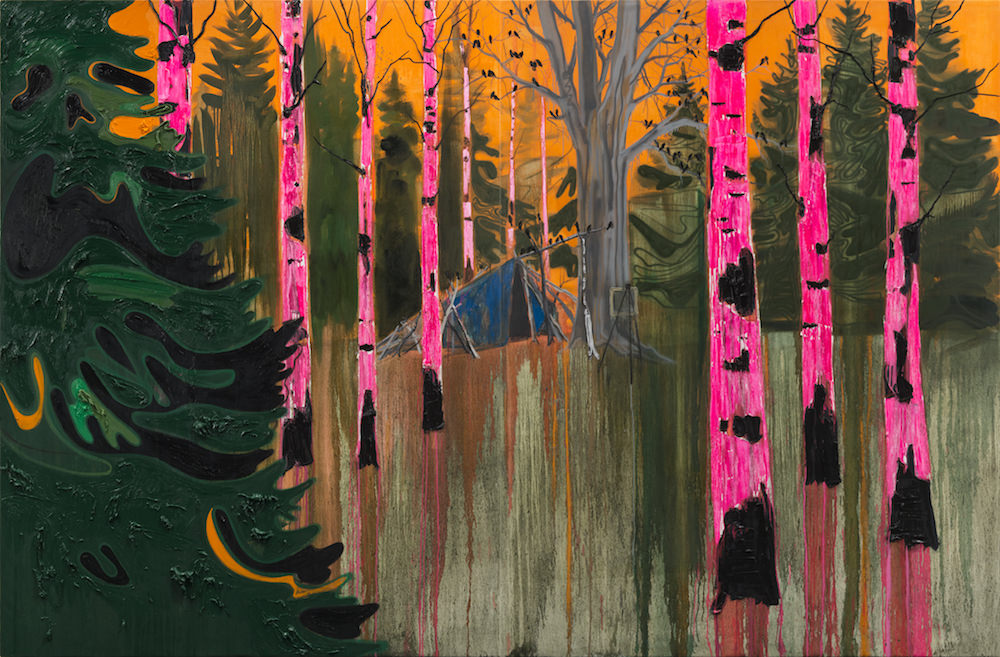Marc-Olivier Wahler is one of the most preeminent names in exhibition theory, having directed the Palais de Tokyo in Paris for six years, and prior to that running the Swiss Institute in New York. Which is what makes his transition from the City of Lights to the City of Angels all the more disconcerting. A lot of people around these parts are rubbing their eyes, and wondering if Los Angeles has finally, actually arrived in global art (as opposed to being an emerging art center). Regardless, Wahler has certainly put his stamp on L.A. in a short period, having recently opened “LOST (in L.A.),” a group show, bringing together L.A. and French artists, loosely based on the time and space machinations of enigmatic television show as they fit into the city’s landscape. And now, he’s opening an exhibition at the prestigious Santa Monica gallery Kayne Griffin Corcoran, titled “From Triple X to Birdsong (In Search of the Schizophrenic Quotient).” We wandered the exhibition during the install and talked about just exactly what the schizophrenic quotient is, the role of the contemporary curator, and what was the causation behind the svelte Parisian’s move to the Golden State.
WHITEWALL: This show has a lot to do with the idea of multiple points of entry. Can you explain that to me as someone that’s walking into the gallery for the first time?
MARC-OLIVIER WAHLER: First, I have to say, there is no concept. With group shows, people tend to wait for an explanation. ‘What’s the theme? It’s about something.’ If it doesn’t fit into the explanation, people are disappointed, because we are accustomed to themed shows. I think the exhibition is a medium on its own, which means it’s the only medium that you have to go through. You have to go through it with your body, and this is the first experience you have with the artwork. The first point is not conceptual; it’s physical. I always start with that, so if there’s any concept, it’s first, to have the space. It’s not only the artworks, it’s the rhythm they play and interfere with each other.
WW: What do you say to someone that wants a clear concept for the show?
MOW: It’s a little bit frustrating for someone that wants a clear concept, but I think exhibitions are a medium on its own, and it shouldn’t be treated as another medium, as a book or a film or something else. Because it’s physical.
WW: As you say that, you’re rejecting any idea of overarching concept, but where does the idea of the ‘schizophrenic quotient’ come into play?
MOW: A good artwork is an artwork that bears many layers of interpretation.
WW: Hopefully, yes.
MOW: This we know. An object with one or two interpretations may be, at best, a design object. But, the more interpretations an artwork gets, the better it is. Everybody agrees with this, but then you want to have a certain explanation of the work, which can be given, but it’s only one subjective way. So, what I call the ‘schizophrenic quotient,’ or intellectual quotient—the higher the quotient is, the more efficient, the more dense, the better the artwork gets.
WW: What does that mean? You’re seeking the highest number of points of entry?
MOW: Yes. I believe that the artwork is like a black hole in that it doesn’t lose its identity, whatever the interpretations are. I think this is quite obvious for an artwork, but an exhibition is something that has to pay tribute to the artwork, so it has to function in the same way, so the artwork can breathe very efficiently. If you give a specific interpretation or specific way of entering the exhibition, you break this ability to produce interpretation and to produce an energy.
WW: It seems like you’re contradicting yourself by even titling the exhibition. Is that something where you just have to function within the constructs of the system, and you need to have a name on this?
MOW: No, I like titles. I think giving one door is okay. Like ‘Lost,’ for example, this is one door, one entrance, one possibility. Of course, it’s contradicting in a way, but otherwise it’s too difficult for the audience. It’s just a tool to start the engine of interpretation. And once you start, then it goes by itself. So, I like to give titles. It helps. For example, ‘Gakona,’ which I did at Palais de Tokyo, which was talking about this factory in Moscow run by the military, trying to produce electricity and send electricity to the stratosphere—so, this is a story. We start with a story. You need doors.
WW: What were you looking for when you selected the works for this show?
MOW: I don’t know. If I were asked to do another show in another space, it would be totally different. As I said, I start with the space—so I have the space, the volume—and, also, it’s Los Angeles. That’s very important. For example, it was important for me to show François Morellet here, because the light sculpture is very Los Angeles. He’s a pioneer artist, and he was doing this in the ’60s way before anyone else. So, for me, it was important to show him here. And then, the space needed a structure, so I thought about Carol Bove with this pedestal. And then, for me, it was obvious to have Rondinone, because it gives a perspective and expands the view to outside the gallery with the stars. And he lives now in Los Angeles. It’s like when you write, or a film: you have certain rhythms, colors, structures.
WW: How do you gauge the success of how each piece speaks to each other?
MOW: A very important thing for me, which I think is not talked about enough, is negative space. The space in between the works, where the audience stands. Normally, the main job of the curator is dealing with artworks. But it’s even more important to deal with the space and not only the works. For architects, it’s obvious, but for curators, sometimes, if you’re aware of this, and you go and see an exhibition, you will see sometimes work and then an exit door, or a fire extinguisher, and all these play a huge role in the exhibition.
WW: Do you think you’re a little bit more aware of that than most curators?
MOW: Oh, I wouldn’t say that. I’m very aware of it. How much space do you allow a work? Will the energy or aura of the work fade away before being taken over by another piece? If there is not enough space, they will telescope each other. If there’s too much space, they will lose the flow of the energy.
WW: When you go to, say, the Venice Biennale, do you sometimes think, ‘This would look so much better in a different context’?
MOW: I have to say yes. I know when I got to the Biennale or an art fair, I have to make an abstraction, and concentrate only on the work.
WW: Does it drive you batty to go to a fair?
MOW: It’s fine. But when I go to a museum show, sometimes it’s very frustrating. I went to a show recently, and I was so excited to see a specific piece. And I see this piece, and it’s in a corner, and you have these exit doors, and stairs—it’s too bad. It made too much flux, and it endangered the artwork.
WW: Can you talk about the difficulties in presenting artwork?
MOW: I’m working on a show called ‘The Prestige,’ which is based on the book by Christopher Priest—the movie was by Christopher Nolan. In the book, magic tricks are presented in a three-part process: the pledge, the turn, and the prestige. It’s just a magic trick, but then you think about how an artwork is operating. First, you see what is presented as an ordinary object. And, then the object is transformed—the turn. The prestige could be applied to the best mystery of the artwork of the 20th century: how an ordinary object becomes an artwork. The question of the transfiguration of the commonplace, as Arthur Danto put it, is very important. You cannot give an answer to that. There are so many things we don’t know about that. So, I try to point outside the artwork grids of interpretation—a way of thinking that could cast a new light on what is at stake in the art world.
WW: You have stormed into L.A. I wanted to know what made you want to move here?
MOW: I don’t know. The best artists are here. It’s where most of the best things in the last 20 years were done.
WW: Is the Chalet Hollywood still going on?
MOW: It’s in the making. But Piero Golia should answer this question, because he has the keys. He’s talking about March.










